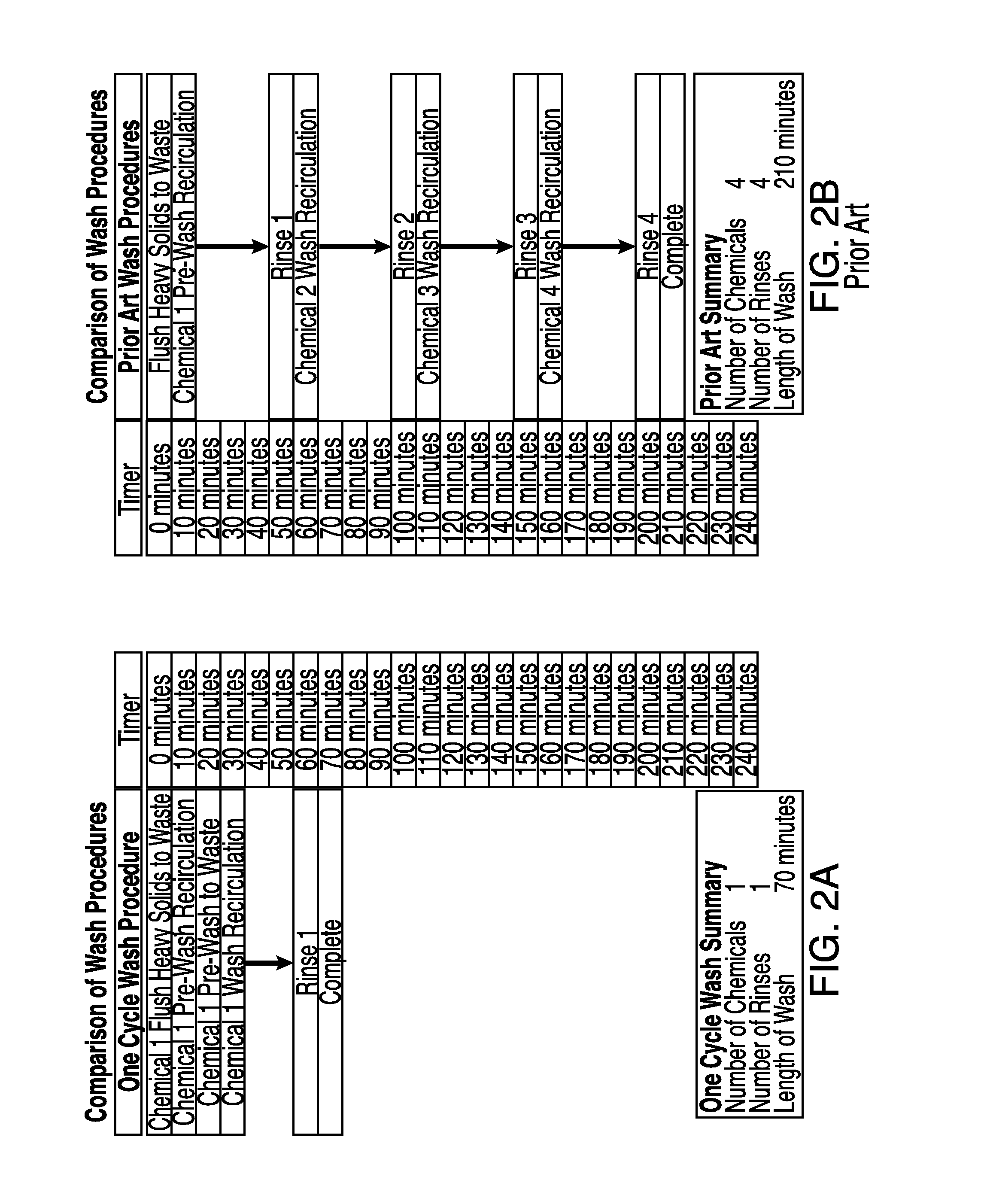Systems and Methods For Cleaning A Membrane Separation System
a separation system and membrane technology, applied in membrane technology, membranes, chemistry apparatus and processes, etc., can solve the problems of reducing the efficiency of the membrane, consuming large amounts of clean water, and current cleaning methods that are time-consuming and expensiv
- Summary
- Abstract
- Description
- Claims
- Application Information
AI Technical Summary
Benefits of technology
Problems solved by technology
Method used
Image
Examples
Embodiment Construction
)
[0039]The following detailed description and disclosure illustrates by way of example and not by way of limitation. This description will clearly enable one skilled in the art to make and use the disclosed systems and methods, and describes several embodiments, adaptations, variations, alternatives and uses of the disclosed systems and apparatus. As various changes could be made in the above constructions without departing from the scope of the disclosures, it is intended that all matter contained in the above description or shown in the accompanying drawings shall be interpreted as illustrative and not in a limiting sense.
[0040]Described herein, among other things, are methods for cleaning a membrane separation system wherein cross-flow of wash solution is used as the primary physical cleaning mechanism of a membrane, and the system is configured to maintain sufficient cross-flow by maintaining preferred pressure in supply lines supplying solution to the members. The described met...
PUM
 Login to View More
Login to View More Abstract
Description
Claims
Application Information
 Login to View More
Login to View More - R&D
- Intellectual Property
- Life Sciences
- Materials
- Tech Scout
- Unparalleled Data Quality
- Higher Quality Content
- 60% Fewer Hallucinations
Browse by: Latest US Patents, China's latest patents, Technical Efficacy Thesaurus, Application Domain, Technology Topic, Popular Technical Reports.
© 2025 PatSnap. All rights reserved.Legal|Privacy policy|Modern Slavery Act Transparency Statement|Sitemap|About US| Contact US: help@patsnap.com



